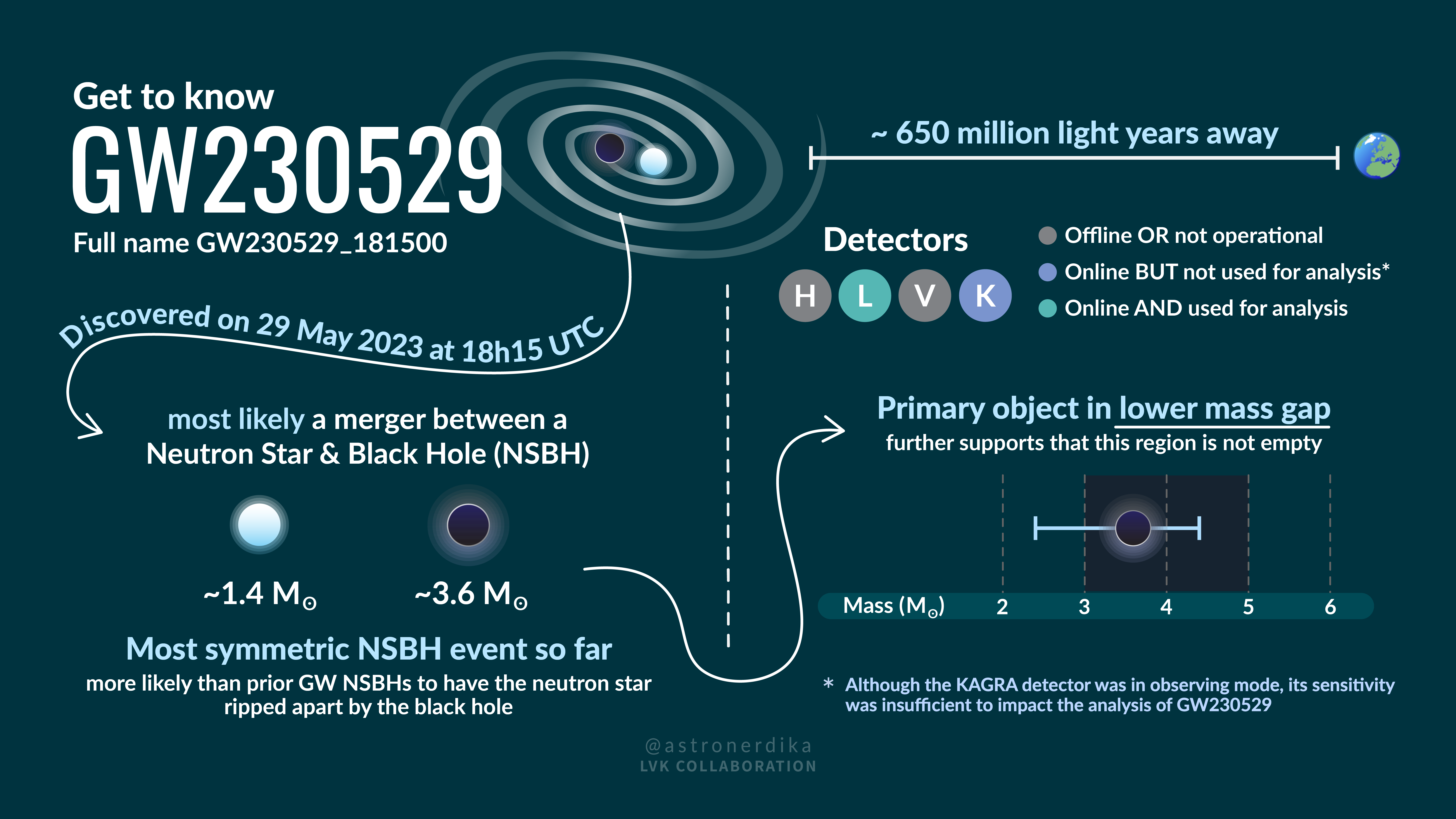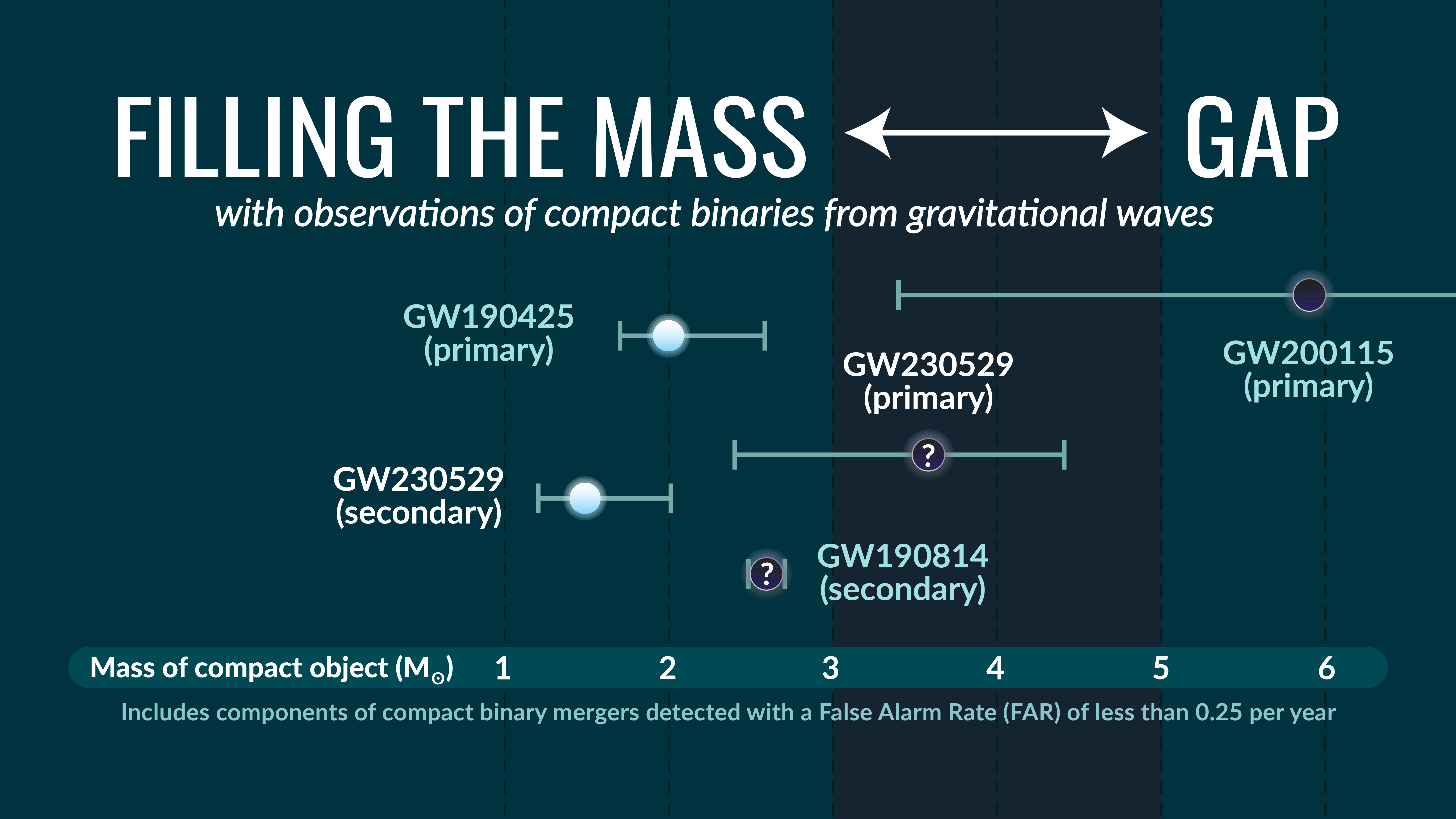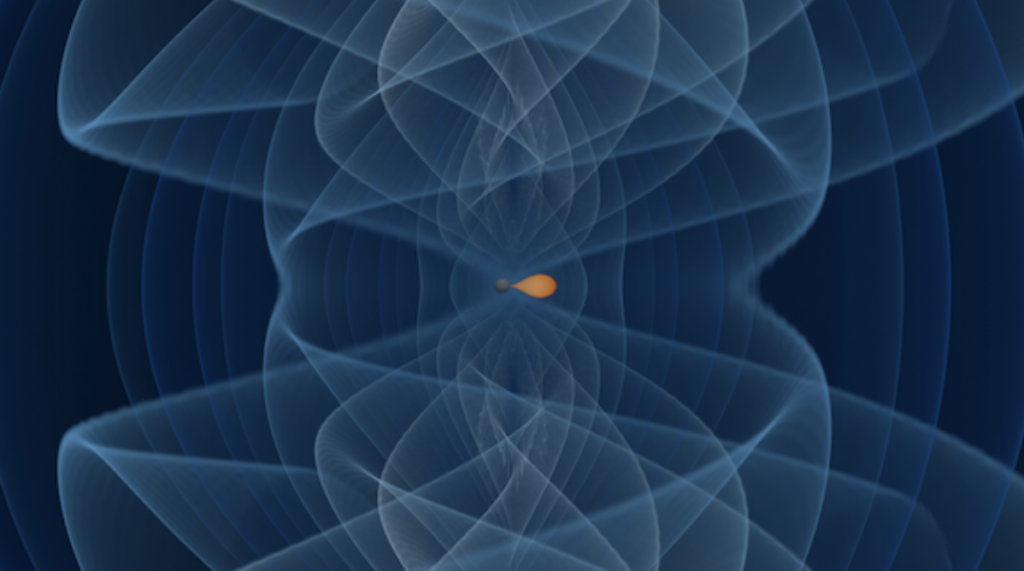On 5 April 2024, the LIGO-Virgo-KAGRA Collaboration announced the discovery of GW230529, a compact binary coalescence observed during the first part of the fourth observing run (O4a). The primary component of this binary has a mass between 2.5 and 4.5 solar masses. The nature of this component is uncertain as its mass is larger than the expected range for neutron stars and smaller than the expected range for black holes. The secondary component has a mass between 1.2 and 2.0 solar masses and is almost certainly a neutron star.

Infographic: Getting to know GW230529. This infographic provides summary information about the gravitational wave event GW230529.
[Image credit: S. Galaudage/Observatoire de la Côte d’Azur]
Publications & Documentation
- Publication: Observation of Gravitational Waves from the Coalescence of a 2.5 – 4.5 Msun Compact Object and a Neutron Star (submitted). pdf download from LIGO DCC
- Press Release
- LIGO Lab news item on GW230529
- Science Summary [pdf flyer]
- Data release for GW230529 (Gravitational Wave Open Science Center/GWOSC).
- Known stellar mass black holes interactive graphic
- See the main ligo.org detection page for further resources.

Infographic: Filling the mass gap with GW230529. This inforgraphic compares the masses of the components of the gravitational-wave binary GW230529 with other gravitational-wave events that lie near the mass gap between neutron stars and black holes.
[Image credit: S. Galaudage/Observatoire de la Côte d’Azur]

Still from a numerical simulation consistent with GW230529. [Credit: I. Markin (Potsdam University), T. Dietrich (Potsdam University and Max Planck Institute for Gravitational Physics), H. Pfeiffer, A. Buonanno (Max Planck Institute for Gravitational Physics)]
Images & Videos
Numerical simulation consistent with the binary coalescence GW230529. This simulation shows the coalescence and merger of a lower mass-gap black hole (dark grey surface) with a neutron star, accompanied by a representation of the gravitational-wave strain amplitude in blue. The gravitational waveform is shown at the bottom of the video. The simulation assumes the primary object is a 3.52 solar-mass black hole with a dimensionless spin parameter of -0.16 (i.e., the black hole spin is anti-aligned to the binary angular momentum). The secondary object in the simulation is a neutron star with a mass of 1.47 solar masses. Still images from the simulation and additional information can be found here.
[Credit: I. Markin (Potsdam University), T. Dietrich (Potsdam University and Max Planck Institute for Gravitational Physics), H. Pfeiffer, A. Buonanno (Max Planck Institute for Gravitational Physics)]
Numerical simulation consistent with the binary coalescence GW230529 (compact objects only). This is the same simulation as as on the left, but showing only a zoomed-in perspective of the black hole and neutron star coalescence. (The visualization of the gravitational-wave strain is not shown.).
[Credit: I. Markin (Potsdam University), T. Dietrich (Potsdam University and Max Planck Institute for Gravitational Physics), H. Pfeiffer, A. Buonanno (Max Planck Institute for Gravitational Physics)]

